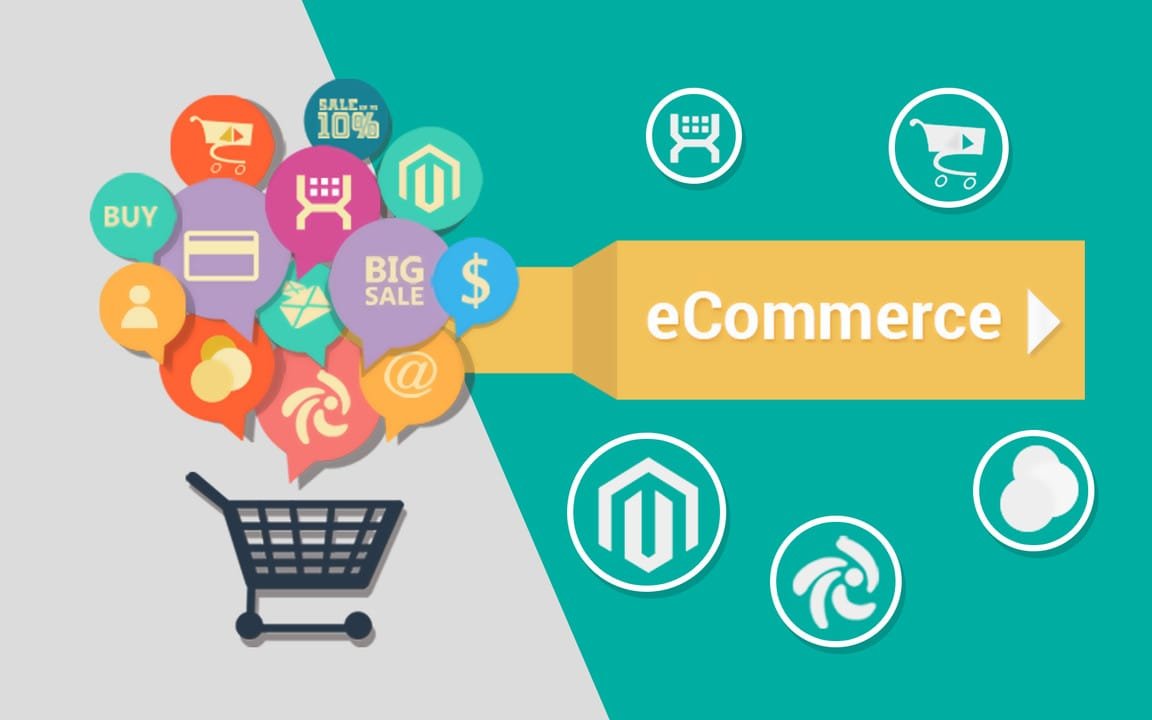No products in the cart.
10 Must-Have E-Commerce Success Features every Website Need to Succeed in 2025
Introduction: The E-Commerce Success Features
The e-commerce industry has grown rapidly in recent years, and the trend is expected to continue into 2025 and beyond. With the increasing number of online shoppers and technological advancements, it’s more important than ever for businesses to ensure that their e-commerce websites are optimized for user experience and conversion. In this article, we will explore the 10 must-have features that every e-commerce website needs to succeed in the competitive landscape 2025.
From faster loading speeds to secure payment options, these essential features will help you attract more customers, build trust, and drive more sales, as well as improve your website’s search engine ranking and user engagement.
—
1. User-Friendly Navigation: Making Shopping Easy
One of the most critical features of a successful e-commerce website is user-friendly navigation. Shoppers need to be able to find what they’re looking for quickly and easily, ensuring a stress-free shopping experience. If the navigation is confusing or complicated, they may leave your site and never return, causing unnecessary frustration.
Why Simplicity Is Key in Navigation
A simple and intuitive navigation structure improves the user experience and increases conversion rates. Categories should be clear, and filters should allow users to narrow their search by size, colour, price, etc. It’s also essential to ensure that your website has a search bar at the top, often the first place customers will look for specific items.
Investing in straightforward, concise navigation and keeping the process easy and quick will increase your chances of retaining customers and driving sales.
2. Mobile Optimization: Shopping on the Go
As of 2024, over half of all online shopping is done via mobile devices, giving customers the power to shop on their terms. Therefore, mobile optimization is non-negotiable for any e-commerce website looking to E-Commerce success Features in 2025.
The Growing Role of Smartphones in Shopping
The mobile-first design ensures your website is fully responsive, automatically adjusting to any screen size. A mobile-optimized site will load faster and be easier to navigate on smartphones and tablets, increasing the likelihood of conversions.
With mobile commerce expected to grow, ignoring mobile optimization could cost you valuable sales. Ensure every aspect of your website, from product pages to the checkout process, is mobile-friendly.
—
3. Secure Payment Systems: Building Trust with Your Customers
Security is one of the top concerns for online shoppers. A secure payment system protects your customers’ sensitive information and gives them peace of mind, establishing trust. Potential buyers may hesitate to purchase without it due to fear of fraud, but with secure payment systems, they can shop confidently.
Top Payment Methods Customers Expect
To build trust and cater to a broad audience, offer a variety of secure payment options, such as:
Credit and Debit Cards
PayPal
Apple Pay
Google Pay
Cryptocurrency (if relevant)
Additionally, use SSL certificates to encrypt transactions and display trust badges, ensuring that your site meets industry standards for security. Building trust through secure payment systems is crucial to reducing cart abandonment and increasing conversion rates.
4. Fast Loading Speed: Keeping Customers Engaged
Website speed plays a crucial role in user experience and search engine ranking. A slow-loading website can frustrate users and cause them to leave before they even get a chance to shop. Studies show that if a site takes more than 3 seconds to load, the likelihood of a visitor bouncing increases dramatically.
Tools to Optimize Site Speed
To enhance your e-commerce website’s loading speed:
Use content delivery networks (CDNs) to serve content faster.
Compress images and files to reduce page load time.
Optimize JavaScript and CSS to improve website performance.
Use lazy loading to ensure images and content load only when needed.
Speed is essential for user experience and SEO rankings, as Google considers site speed a ranking factor.
5. Personalized Shopping Experience: Using Data for Engagement
In 2025, personalized shopping experiences will be a game-changer for e-commerce websites. By leveraging data, you can recommend products based on a customer’s past purchases, preferences, and browsing behaviour.
How AI Powers Personalization
AI-powered tools can analyze user data to offer personalized product recommendations and promotions. This creates a more engaging and customized shopping experience for your customers, making them feel valued and understood.
Personalization can also extend to special discounts or personalized email campaigns based on users’ shopping habits. Studies show customized recommendations increase conversion rates significantly, so incorporating this feature is a no-brainer.
6. Clear Product Descriptions & High-Quality Images
Customers can’t physically touch or see products in person when shopping online. Therefore, providing clear product descriptions and high-quality images is essential for building trust and guiding customers through buying decisions.
Using High-Resolution Images for Product Pages
Invest in professional, high-resolution images that show your products from multiple angles and allow zoom functionality. Provide detailed product descriptions, including specifications, dimensions, materials, and usage instructions. Video content can also effectively give customers a closer look at your products.
Clear and engaging product information makes it easier for customers to make a purchase decision and reduces the likelihood of returns.
7. Customer Reviews and Ratings: Building Social Proof
In 2025, customer reviews and ratings will play an even bigger role in influencing potential buyers. Social proof is one of the most potent tools in e-commerce success features , as positive reviews help build credibility and trust.
Encourage Reviews Through Incentives
Offer incentives such as discounts or loyalty points to encourage customers to leave reviews. Display user-generated content, such as photos and videos of customers using your products, to increase trust and engagement.
8. Easy Checkout Process: Reducing Cart Abandonment
A complicated or lengthy checkout process is one of the leading causes of cart abandonment. To reduce this, ensure your checkout process is simple, straightforward, and as fast as possible.
The Impact of Multiple Payment Options
Offer a variety of payment methods to accommodate different preferences. Customers can also check out as guests rather than being forced to create an account, which can be a barrier to completing the purchase.
Consider adding features like auto-fill for address fields and progress indicators to make the process faster.
9. Inventory Management: Real-Time Stock Updates
Real-time inventory management ensures your customers know whether an item is in stock. Updating stock levels immediately after a purchase is critical to avoid overselling or disappointing customers.
Using Automated Tools for Inventory Control
Inventory management software can help you track stock levels, manage reordering, and reduce the risk of overselling. It also allows you to provide back-in-stock notifications to customers, increasing the chances of a sale when products become available again.
—
10. Excellent Customer Support: Enhancing User Experience
Excellent customer support is essential for creating a positive experience and building customer trust. In 2025, offering responsive and helpful customer support will be crucial to e-commerce success.
Chatbots: A Quick Way to Assist Customers
Live chat, chatbots, and a comprehensive FAQ section can significantly improve the customer experience. With AI-powered chatbots, you can provide 24/7 assistance to customers, answering questions and solving issues instantly.

Conclusion: Why These E-Commerce Success Features Will Help Your E-Commerce Website Succeed in 2025
As the e-commerce landscape continues to evolve, staying ahead of the competition is crucial for long-term success. Implementing the 10 must-have features discussed in this article will help ensure your website is functional, user-friendly, and optimized for higher conversions and customer loyalty.
Incorporate these features into your e-commerce website, and you’ll be well on your way to building a successful, customer-centric online store in 2025 and beyond.
—
FAQs: Common Questions About E-Commerce Success Features
1. Why is mobile optimization so crucial for e-commerce websites?
Mobile optimization ensures that your website is accessible and easy to navigate on mobile devices. Since most online shopping is done on smartphones, providing a seamless mobile shopping experience is crucial to increasing conversions.
2. How can I ensure my e-commerce website is secure?
3. How can I reduce cart abandonment on my e-commerce website?
Simplify the checkout process, offer multiple payment options, and use trust signals like security badges and reviews. Consider implementing an abandoned cart recovery strategy, such as email reminders or discounts.
4. Why are customer reviews critical for e-commerce?
Customer reviews provide social proof that helps build trust with potential buyers. Positive reviews influence purchasing decisions and can significantly increase conversion rates.
5. How can I personalize the shopping experience on my website?
You can personalize the shopping experience by using data to recommend products, offer personalized promotions, and customize email campaigns based on customers’ shopping.









Add comment